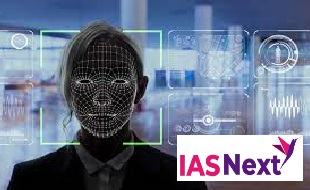CURRENT AFFAIRS
Get the most updated and recent current affair content on Padhaikaro.com
Facial recognition technology
- IAS NEXT, Lucknow
- 04, Dec 2021

Reference News:
After a delay of three years, come March 2022, passengers will be able to use a face scan as their boarding pass at four airports in the country.
- Airports at Varanasi, Pune, Kolkata and Vijaywada will be the first to roll-out the facial recognition technology-based biometric boarding system, and the service will go live from March 2022.
- Thereafter, the technology will be scaled up in a phased manner across various airports in the country.
Implementation:
- The Airports Authority of India has engaged NEC Corporation Private Limited for implementing the technology as part of the DigiYatra policy, which seeks to promote paperless air travel and a seamless journey from entering an airport till boarding a plane.
- The policy was unveiled in October 2018, and as per the original plan, the roll-out of the facial recognition technology was scheduled for April 2019.
What is facial recognition?
Facial recognition is a biometric technology that uses distinctive features on the face to identify and distinguish an individual.
- AFRS works by maintaining a large database with photos and videos of peoples’ faces. Then, a new image of an unidentified person — often taken from CCTV footage — is compared to the existing database to find a match and identify the person.
- The artificial intelligence technology used for pattern-finding and matching is called “neural networks”.
Benefits of facial recognition:
- Improves outcomes in the area of Criminal identification and verification.
- Easy identification amongst crowds.
- Boosts the police department’s crime investigation capabilities.
- Helps civilian verification when needed. No one will be able to get away with a fake ID.
What are the Concerns?
- Absence of specific laws or guidelines poses a huge threat to the fundamental rights to privacy and freedom of speech and expression because it does not satisfy the threshold the Supreme Court had set in its landmark privacy judgment in the ‘Justice K.S. Puttaswamy Vs Union of India’ case.
- Many institutions have not conducted “privacy impact assessment” prior to deployment of the facial recognition system (FRS).
- Function creep: A function creep happens when someone uses information for a purpose that is not the original specified purpose (Police got permission to use the FRS by an order of the Delhi High Court for tracking missing children. Now they are using it for wider security and surveillance and investigation purpose, which is a function creep).
- This might lead to an over-policing problem or problems where certain minorities are targeted without any legal backing or any oversight as to what is happening. Another problem that may arise is of mass surveillance, wherein the police are using the FRT system during protest.
- Mass surveillance: If someone goes to a protest against the government, and the police are able to identify the person, then there might be repercussions.
- The basis of the AFRS is a Cabinet note of 2009. But the Cabinet note is not a legal substance, it’s a procedural note at best. So it does not form a valid legal system based on which the AFRS can be built.
Need of the hour:
The Supreme Court in the Puttaswamy judgment ruled that privacy is a fundamental right even in public spaces. And if these rights needs to be infringed, then the government has to show that such action is sanctioned by law, proportionate to the need for such interference, necessary and in pursuit of a legitimate aim.